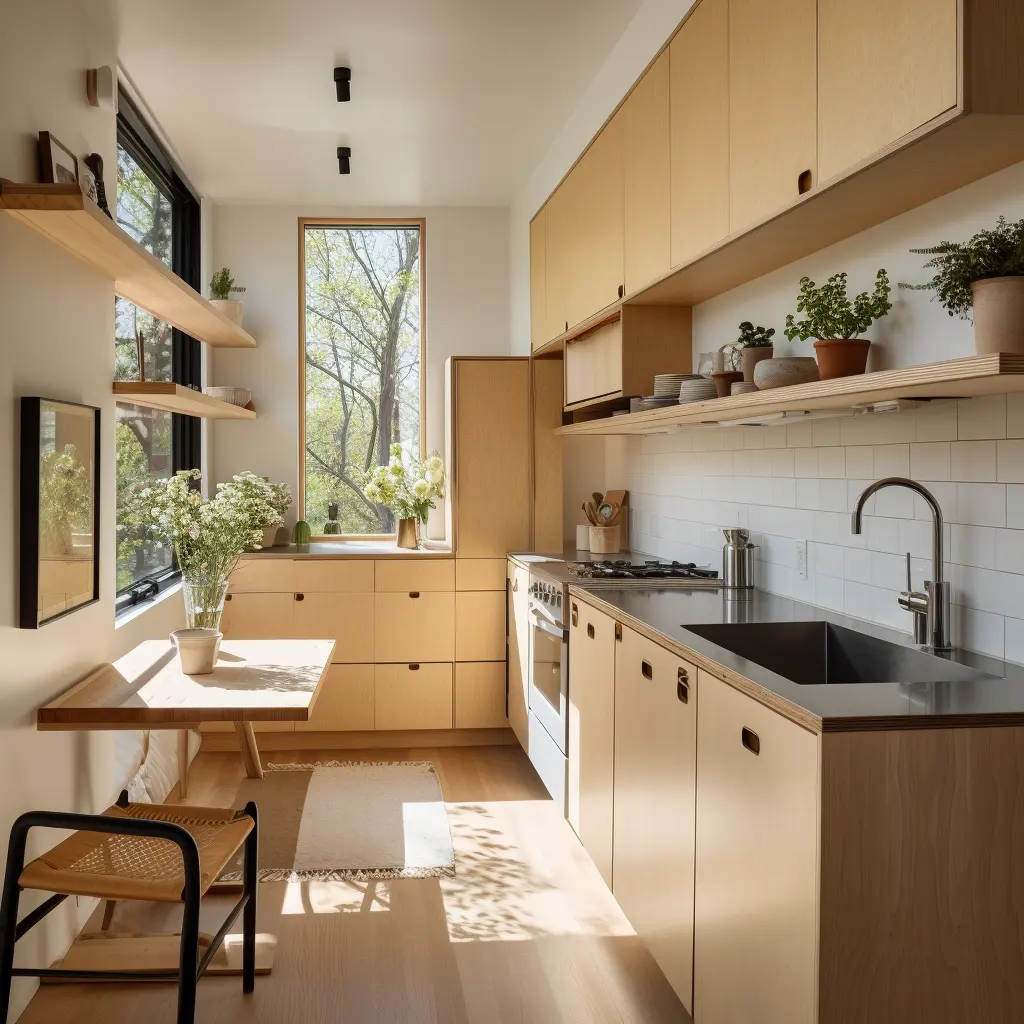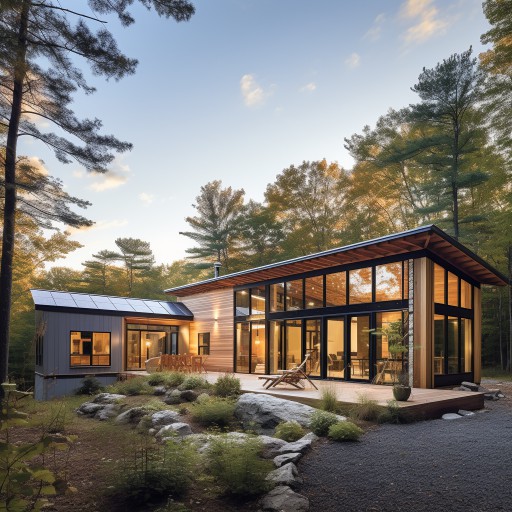Can an Old House Be Energy-Efficient?

co-founder
- The Charm and Challenge of Older Houses
- Where is Most Home Energy Lost?
- What are the Low-Cost Ways to Make Your Home More Energy-Efficient?
- What are some Energy-Efficient Home Features?
- Are Solar Panels Energy-Efficient?
Many homeowners often ask, "Can an old house be energy-efficient?" The answer is an emphatic "Yes!" With the right updates and tweaks, older homes can indeed become energy-efficient powerhouses. This article will explore how you can transform your old home into a sustainable one without breaking the bank. If you're ready to get started, create and EcoHome project and learn how EcoHome empowers homeowners to realize their energy efficiency dreams.
The Charm and Challenge of Older Houses
Older houses, often cherished for their charm and character, are frequently built with materials and methods that stand the test of time. Their enduring appeal is one reason why they often last longer than some modern builds. However, from an energy efficiency perspective, these vintage dwellings may not quite measure up to their newer counterparts. Without proper energy efficient home upgrades, they can be significant energy wasters. But here's the silver lining: with the right modifications, older homes can indeed become energy-efficient. Let's delve into understanding where most of this energy loss occurs and how you can counter it.
Where is Most Home Energy Lost?
When considering energy efficiency, it's vital to know where energy loss typically occurs. For older houses, the majority of energy is lost in three main areas: walls, windows, and roofs.
Walls: In many older homes, wall insulation was either never installed or is inadequate by today's standards. This leads to a significant amount of heat loss through the walls. It's estimated that up to 35% of heat loss in an uninsulated home occurs through the walls.
Windows: Another substantial source of heat loss in homes is through windows. Old or poorly installed windows can allow drafts and make it difficult to maintain a consistent interior temperature. Older single-pane windows, in particular, lack the insulating properties of modern double or triple-glazed options. Windows can account for up to 30% of a home's loss of heating energy, according to energy.gov.
Roofs: A lot of heat rises, and without proper roof insulation, it can escape easily. Insufficient roof insulation is another common feature in older homes, and this can account for about 25% of a home's heat loss.
Inefficient systems and appliances: Older houses often come equipped with outdated heating and cooling systems, water heaters, and appliances, which are typically much less efficient than their modern counterparts. This leads not only to higher energy consumption but also to increased utility bills.
Recognizing these common areas of energy loss is the first step towards improving the efficiency of an older house. The next step involves making strategic updates and renovations to reduce this energy loss, which we'll discuss in the next section.
What are the Low-Cost Ways to Make Your Home More Energy-Efficient?
Even with the inherent challenges of older homes, there are several low-cost ways to make them more energy-efficient. Let's delve into five practical strategies to retrofit an older home for energy efficiency:
Insulate and Seal Your Home: Start by improving insulation in the areas we've identified as common sources of heat loss. Adding insulation in the attic is relatively easy and cost-effective. For walls, blown-in insulation can be added without damaging the existing wall surfaces. Next, seal off drafts around windows and doors with weatherstripping and caulk. Small leaks can add up to significant energy loss, so this step is critical.
Upgrade Windows: If your budget allows, consider replacing old windows with energy-efficient models. If that's not feasible, there are less costly options like installing window film to increase insulation or using thermal curtains.
Update Lighting: Replace old incandescent bulbs with energy-saving LED or CFL bulbs. They use less energy and last longer, providing savings in the long run.
Install a Programmable Thermostat: Older homes often have outdated thermostats. A programmable thermostat can optimize your heating and cooling system's efficiency by adjusting the temperature based on your schedule.
Use Power Strips: Many devices and appliances drain power even when they're not in use. Using power strips and turning them off when the devices aren't in use can eliminate this phantom energy drain.
Remember, each home is unique, so the exact solutions will depend on your home's particular features and issues. These low-cost strategies can help you start the journey towards a more energy-efficient home, but they are only the beginning. More substantial upgrades and renovations may be necessary in the long run to truly optimize the energy efficiency of an older house, as we will explore in the next section.
What are some Energy-Efficient Home Features?
When it comes to bigger renovations and upgrades, several energy-efficient home features can significantly enhance the overall sustainability of an older house. While the upfront costs can be higher, the long-term energy savings and benefits to the environment make these features a worthy investment. Let's explore five of these energy-efficient home features:
Energy-Efficient Appliances: Appliances account for a significant portion of a home's energy consumption. Upgrading to ENERGY STAR certified appliances can cut energy usage by up to 50%. From refrigerators to washing machines, energy-efficient appliances offer the same functionality with significantly less energy expenditure.
Solar Panels: Solar panels transform sunlight into electricity, reducing reliance on grid-supplied power. While the upfront cost can be significant, many regions offer incentives and tax credits that can offset the expense. Plus, the savings on electricity bills over the panels' lifespan can make them a cost-effective choice. Solar panels are an excellent option for older homes, provided the roof structure can support them.
High-Efficiency HVAC Systems: HVAC systems can be major energy hogs, especially in older homes. Upgrading to a high-efficiency system can drastically reduce energy consumption. Consider systems with a high Seasonal Energy Efficiency Ratio (SEER) for air conditioning and a high Annual Fuel Utilization Efficiency (AFUE) rating for heating.
Tankless Water Heaters: Traditional water heaters continuously heat a tank of water, which consumes energy even when hot water isn't needed. In contrast, tankless water heaters heat water on-demand, reducing energy use. Plus, you'll never run out of hot water!
Smart Home Technology: From smart thermostats that learn your schedule and adjust accordingly to smart power strips that cut off power to electronics when they're not in use, smart home technology can offer significant energy savings.
These features are examples of how to retrofit older homes for better energy efficiency. However, keep in mind that the effectiveness of each feature will vary based on the specifics of your home. It's always a good idea to get a professional energy audit to determine which improvements will have the most impact. This holistic approach to energy efficiency can help you create a roadmap for upgrading your old house into a modern, eco-friendly home.
Are Solar Panels Energy-Efficient?
Solar panels are a central feature of many energy-efficient homes today, and it's no wonder why. These installations not only use a renewable resource to generate electricity, but they are also incredibly efficient at it.
The efficiency of a solar panel refers to how much sunlight it can convert into usable electricity. The most commonly used solar panels have an efficiency of about 15-20%. While this might seem low, keep in mind that the sunlight they convert is free and abundant. The higher the panel's efficiency, the more electricity it can generate per unit of surface area. So, for homeowners with limited roof space, investing in high-efficiency panels could allow them to meet more of their energy needs through solar power.
What's even more exciting is that advancements in solar technology are continually improving their efficiency and affordability. There are high-end solar panels in the market now that boast efficiencies of over 22%. Furthermore, the cost of solar panels has significantly decreased over the past decade, making it a more accessible option for homeowners.
Solar panels are particularly effective for older homes as they can offset some or all the house's electricity consumption. This is a significant advantage, especially for older homes, which tend to be less energy-efficient than new builds.
Moreover, solar panels can feed excess electricity back into the grid (where local laws permit), allowing homeowners to earn credits on their utility bills—a system known as net metering.
On top of being an efficient source of power, solar panels also help reduce a home's carbon footprint, promoting a cleaner and greener environment.
So, while the initial investment might seem substantial, the long-term benefits of solar panels make them a great addition to an energy-efficient home, regardless of its age. It's always recommended to have a thorough inspection and discussion with a professional installer to assess your home's suitability for solar panels. They can provide a detailed breakdown of the costs, savings, and payback period you can expect.
There's no denying that making an old house energy-efficient requires an investment of time, effort, and money. However, the benefits, including reduced energy bills, increased home value, and a reduced environmental impact, make this investment worthwhile. With the right strategies and updates, you can transform your old house into an energy-efficient marvel.

Renovate with EcoHome
EcoHome empowers homeowners to confidently build healthy and comfortable homes for a fair price.
Sign UpLocations View All →
NY
- Albany
- Binghamton
- Buffalo
- Esopus
- Freeport
- Hempstead
- Highland
- Kingston
- Long Beach
- Marlboro
- Mount Vernon
- New Paltz
- New Rochelle
- New York City
- Niagara Falls
- North Tonawanda
- Olivebridge
- Plattekill
- Rochester
- Rome
- Saugerties
- Schenectady
- Shandaken
- Syracuse
- Troy
- Utica
- Valley Stream
- Wallkill
- Woodstock
- Yonkers
NJ
- Bayonne
- Brick
- Camden
- Cherry Hill
- Clifton
- East Orange
- Edison
- Elizabeth
- Jersey City
- Lakewood
- Middletown
- Newark
- Old Bridge
- Passaic
- Paterson
- Toms River
- Trenton
- Union City
- Woodbridge
CT
PA
- Allentown
- Altoona
- Bethel Park
- Bethlehem
- Chester
- Easton
- Harrisburg
- Hazleton
- Lancaster
- Lebanon
- Monroeville
- Philadelphia
- Pittsburgh
- Reading
- Scranton
- Wayne
- Wilkes Barre
MD
- Abingdon
- Baltimore
- Bethesda
- Bowie
- Columbia
- Dundalk
- Ellicott City
- Frederick
- Gaithersburg
- Germantown
- Glen Burnie
- Potomac
- Rockville
- Severn
- Silver Spring
- Towson
- Waldorf



